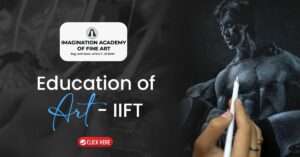Abstract art designs are a tough practice since they are difficult to know where to begin. The lack of direction may appear to be a drawback, yet it is actually an advantage. The truth is that we may gain inspiration from our surroundings in a variety of ways. Looking at nature, for example, may be a tremendous source of inspiration, whether it’s things, forms, colors, or even noises.
The world of art has gone a long way, and inspiration for modern abstract painting ideas may come from the most unexpected places. After all, the idea of abstract painting is to let go of preconceived notions and let the art emerge organically as you go.
On that note, today we look at a few easy ideas for creating abstract art designs using only a few simple tools and whatever is available to us.
An In-Depth Look at Abstract Art Designs
The thought of making abstract art designs in a tasteful manner appears difficult. In most situations, even if we realize an artwork is abstract, we can still recognize talent and technique in the piece.
In today’s blog, we will look at a few easy concepts that we can use in our creative process to create amazing abstract art ideas. So, in order to get a solid understanding of abstract artworks, we will work with both abstract painting and abstract drawing concepts.
Crafting an Abstract Geometry-Styled Painting
Because abstract art is up to interpretation and subjective viewpoint, we can make whatever we want. Geometric-styled abstract art designs are one of the most prominent types of abstract art designs that have proliferated over the last century.
Geometry has been a significant genre of abstraction throughout the arts, from artists like Escher to movements like Bauhaus. Let’s see how we may make our own three-dimensional geometry-inspired abstract art creations.
Making Use of Masking Tape as a Painting Tool
Masking tape is a great tool for generating gorgeous straight lines. Using a pencil and ruler to form shapes is vital when making geometry-styled artwork. However, using masking tape to cover areas of various forms may be an efficient approach to produce clear, crisp lines.
Masking tape works nicely with acrylic paint since it can be used to divide portions of your abstract artwork. Masking tape is especially useful for producing sharp-edged objects, and it is far easier than attempting to paint a straight line freehand.
Using Light and Shadow as a Guideline
When designing attractive geometric designs, make certain to use a ruler and pencil to define your shapes as you go. And instead of worrying about sketching a complete picture, let your painting develop naturally. However, bear one thing in mind which is to maintain the notion of light and shadow while you paint.
When it comes to designing three-dimensional forms, the rule of three-tonal values is often followed. This means that we want three tonal values to be present inside the forms we paint in order to create a three-dimensional image. We may let ourselves experiment with this notion while we paint.
In this situation, we may use masking tape to separate distinct planes within our forms, which we can subsequently paint with varied tonal values. Consider utilizing a monochromatic technique for this instruction so that you may work with a whole spectrum of a single hue.
Allow yourself to experiment with different ways of representing three distinct tonal values in different forms. The unusual employment of multiple tones in different sequences is what makes the piece abstract.
Using the principle of three tonal values in a single hue is enough to generate odd form changes. This implies that if you paint one form with three colors from a specific set, you should attempt rearranging the color order for a new shape, and so on.
Experimenting with Composition
Once you grasp the process of constructing forms, using masking tape to separate off parts in the shapes, and finally, tonal values, you may apply those abilities to build compositions.
In one sense, you may approach the creation process methodically by drawing first and then painting. Having said that, there is a certain beauty in letting the image and composition unfold as you go.
Drawing markings work well as a driving force, but employing masking tape and the notion of color combination is another wonderful technique to develop your geometric-styled marks inside your artwork.
This implies that you may add new forms as you go along in your painting by using masking tape. You may also experiment with different tonal values in already painted areas of your artwork.
The truth is that there are no rules; instead, light and shadow should be used as your guiding principles. This gives you the freedom to create whatever shape and form you want while using light and shadow to create differences within your forms.
Conclusion
Now that you are aware of the rule of three for light and shadow in three-dimensional forms and how to utilize masking tape as a geometry painting tool, feel free to experiment. These are easy tools and approaches for creating distinctive and fascinating geometric-styled artworks.
You may create sophisticated and complex abstract drawing concepts with these easy abstract art painting techniques using acrylic paint and masking tape. So, allow yourself to experiment and see how much you can make with these basic ideas and tactics.




